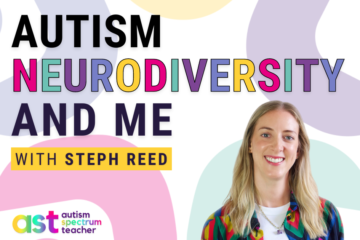Table of Contents
Visual structure
Structuring a lesson or activity by breaking it down into small parts with visual prompts can make the lesson/ activity manageable for autistic children because it enables the pupils to know what they will be doing now, next and when the activity is coming to an end. Here is an example of visual symbols used in a physical education lesson.

At the beginning of the lesson, I would say “what’s first?” and take the first symbol to show all the children individually so they can say, sign, read or point to the symbol. In this case it is ‘warm up’ so we would then do the warm up. When the warm up is finishing, I would count down from 5 and say “warm up has finished”. In a P.E. lesson I usually ask the children to “sit on the bench” before referring them to the visual symbols and removing the warm up symbol whilst again saying “warm up has finished”. I would then say “whats next?” and again individually show the children the next symbol. This process is repeated for each small activity of the lesson. This gives a clear structure and routine to the lesson which the children learn and can feel comfortable with. When it is time for ‘cool down’, the children can clearly see the lesson is coming to an end as there is only 1 symbol left.
Here is a similar example of how I’ve structured a music lesson using a similar routine. I have used a green and red board; green for what is coming up and red for when the activity has finished.

There is a similar pattern with how I’ve structured this lesson. The lesson is broken down into smaller activities and each has a visual symbol to show the children what is next. When an activity has finished, I move it to the red finished area and say “what’s next?” before showing all of the children individually the next activity for them to say, sign, read or point to.
Don’t forget this structure can benefit all children and can make mainstream activities more inclusive by enabling the children that can understand symbols to know what is happening next and how many activities to go before the session is finishing. This type of structure could also be used with photos for children who understand photos but perhaps not symbols, objects of reference for children at that level and words for more able children who are confident at reading.
Also, do remember that a symbol programme like the one I have used to make symbols is also not necessary. Symbols like these can be replaced by pictures simply found on the internet, photos you have taken or by simply drawing a picture!




4 Comments
Amelia · November 16, 2014 at 7:03 pm
Awesome tool to help students understand what comes first and then next. I really like how you plan a lesson and then make the symbols that are necessary for that lesson. It would be very adaptable also. You could just have one or have more than one for all of your students. Looking forward to using this tool in the future. How did your students respond to it?
Stephanie Maddock · November 19, 2014 at 12:41 pm
Hi
I hope you can help me, I have been looking everywhere for the run stop sign.
Would you be able to email me just this single image?
I have 3 children with ASD in the nursery, they love to chase and provoke each other.
They do not have language to communicate with one another and I desperately need a sign so that I can allow them to run outside and not around the room knocking other children out of their way.
I really really hope you can help.
Thank you Stephanie
sreed · February 22, 2015 at 6:52 pm
Hi Stephanie,
Sorry for the late reply. I will be unable to send you those images as in the photo as it comes from a program, however, there are many images that can be found on the internet by searching in google images. I hope you have found something to use and the children have learnt to understand them 🙂
Let me know if you need more help with this…
Neil Hogbin · May 27, 2015 at 8:54 am
You’ve made some great points. I agree. I work with adults who need full time care with learning disabilities and/or autism and they need that structure too. It’s a life long thing. Keep up the good work!
Comments are closed.